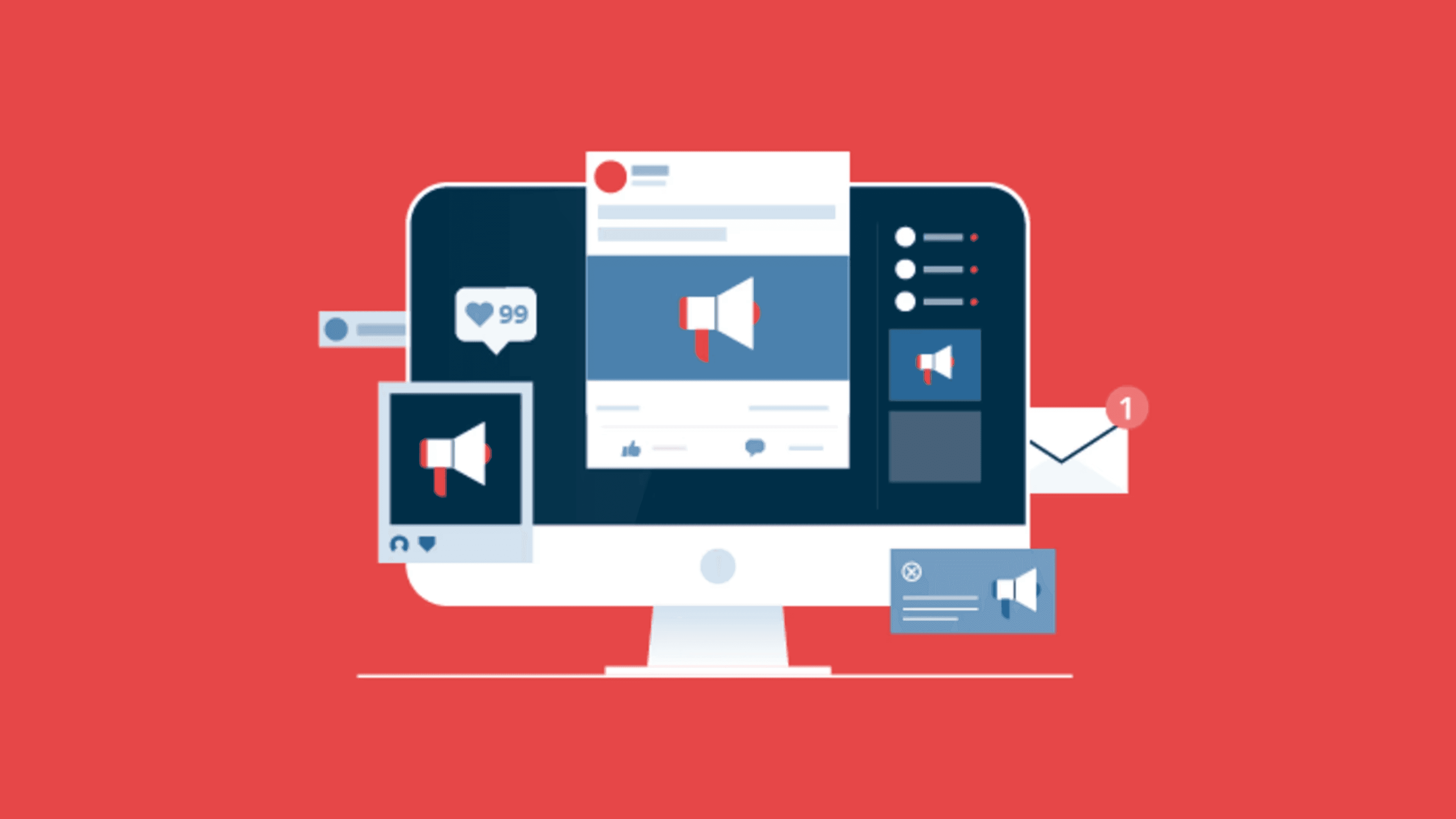
Double opt-in
Double opt-in is an email subscription method. It means that users are added to your mailing list only after they confirm the subscription two times. With this method, you’ll get high-quality leads and better email deliverability. Building a mailing list using a subscription form can seem like a tedious process, but it is a must for your email marketing strategy. When choosing a list building technique, you should decide which email subscription method to use — single opt-in or double opt-in. Each of them has its own peculiarities as well as advantages and disadvantages. Read on to discover the difference between single opt-in and double opt-in. Single Opt-in vs Double Opt-in The difference between these two methods lies in the number of steps users must take to subscribe. Hence, the choice will influence the quality of your mailing list, email deliverability, and number of conversions. Single opt-in means that a user joins your list right after they provide their email address and click “Subscribe.” So, this is a one-step process that doesn’t require users to go to the inbox to confirm their subscription. Look below to see how the single opt-in subscription process looks. Users enter their email address. Then, they submit the address and immediately join the mailing list. A double opt-in method implies a two-step subscription process. After users leave their email address in a form, they receive an email with a confirmation link. If they follow it, they join a company’s mailing list. Look at the example of the double opt-in form below. After users leave their email address, they’re asked to verify it. Immediately, they receive a confirmation email. The brand asks them to follow the link if they want to subscribe or delete the email if it was received by mistake. Advantages and disadvantages of double opt-in Double opt-in subscription forms have several significant advantages over single opt-in forms. Check them out below. Advantages Quality leads. If users went through two-step verification, you can be sure they’re aware of what they’re doing and are really interested in your brand. High email deliverability. The double opt-in method helps marketers eliminate spam traps, emails with typos, and their competitors’ attacks aimed at harming the sender’s reputation. With this method, you’ll collect a high-quality mailing list and send campaigns to engaged subscribers that will result in high email deliverability, open rates, and overall email performance. Compliance with GDPR regulations. Despite the fact that double opt-in is not required by the GDPR regulations, it won’t be superfluous. Use it as extra proof that you send legal campaigns. Still, the double opt-in method has some minor disadvantages. Before creating a subscription form, you should be aware of them. Disadvantages Slow mailing list growth. Since the subscription process takes two steps, users need more time to join your list. Besides, some of them can forget to check their inbox. As a result, it takes much longer to collect a list. Lower conversions. Some users interested in your blog or products may not have time to check the inbox or simply give up halfway because of this two-step process. So, you should realize that you’ll get lower conversions. Now, that you know the peculiarities of each method, it’s time to choose one and start collecting leads. No matter which method you like, LIKE.TG allows marketers to create both forms without any technical skill for free. Follow the instructions below. How to Create a Double Opt-in Subscription Form Register with LIKE.TG Choose a subscription form type Design your subscription form Select the necessary subscription method Creating a subscription form won’t take you more than 30 minutes with the LIKE.TG Subscription Form Builder. You only need to drag and drop the necessary elements to your form, and design them to your liking. Step 1: Register with LIKE.TG If you don’t have an account yet, create it. You can sign up with Google or Facebook. Step 2: Choose a subscription form type In your account, navigate to “Subscription forms,” click “Create a new form.” Then, choose the form you like and select a mailing list where all the addresses will be added. Step 3: Design your subscription form Drag the necessary elements from the left to your form, and edit them in the right panel. You can add as many fields as you need, use checkboxes, radio buttons, drop-down menus, etc. Change style, colors, font, images, background color, etc. Step 4: Select the necessary subscription method In the upper right corner, click “Form Options” and go to “Opt-In Settings.” Here you should enable the corresponding setting by turning the toggle switch to the ON position. So, after subscribing, users will receive a confirmation email. After that, you can edit the text of your confirmation email below. If you decided to use a single opt-in method, you don’t need to change the settings since it is configured by default. In our knowledge base, you’ll find a step-by-step guide to creating a subscription form.

Download CooCoo WhatsApp Filter 2023 latest version
CooCoo WhatsApp filter I don't know if you know what it means, this is actually an application tool for filtering user data, it is a modified WhatsApp application that provides some additional functions and customization options beyond the original WhatsApp The functional scope of the application.Currently, marketers engaged in foreign trade basically use the coocoo WhatsApp filter tool to quickly screen contacts, helping marketers to carry out marketing work as soon as possible and expose their products and brands.Everyone knows what the WhatsApp filter means, that is, according to the filter conditions we set, we can quickly filter out active WhatsApp accounts, filter out the user's WhatsApp profile picture, judge the user's age and gender according to the profile picture, and filter out individuals signature and more.The CooCoo WhatsApp filter is also the same. It can quickly filter out WhatsApp contacts. It has the same function as the WhatsApp filter, because there are many third-party WhatsApp filters on the market. Each company has a definition and nickname for the software. It is not the same, so we may be unfamiliar with some software, but their basic function is to screen active WhatsApp accounts.The CooCoo WhatsApp filter can bring us the following benefits:1. Personalized customization: You can customize your own marketing tools according to your own needs, and customize your screening software to make it more in line with your usage habits.2. Save user costs: the first step in WhatsApp marketing is to find users, so that you can do marketing. You can quickly filter out the users in the country or region you want through coocoo whatsapp screening, and filter out active user groups , it is convenient for us to do whatsapp marketing, and it can save user costs.LIKE.TG WhatsApp Filter, users can scan the QR code to log in to your WhatsApp account or import channel accounts or hash accounts in batches to filter, use your WhatsApp permissions to filter the target phone numbers registered for WhatsApp, and judge gender and age based on WhatsApp avatars. After filtering, you can export .txt/.xls/.xlsx/.vcf files.As we all know, WhatsApp is officially updated every Thursday. Our third-party software must change accordingly, or add or delete corresponding functions according to user needs, so we are using the CooCoo WhatsApp filter When installing software, it is definitely necessary to download the latest version of the software.CooCoo WhatsApp filter software latest version download address: https://www.LIKE.TG007.com/html/whatsapp.htmlThe above content is the content about "Download the latest version of CooCoo WhatsApp filter 2023" shared by the editor of LIKE.TG. I hope it will be helpful to you. If you want to know more about CooCoo whatsapp filters, you can visit LIKE.TG.

Download Facebook multi-account marketing software
We do Facebook marketing, and it is common to use third-party developed Facebook marketing tools to assist our marketing efforts. Many foreign trade marketers follow this practice.There are various ways to do Facebook marketing. For example, you can engage in content marketing by posting, sharing videos, or live streaming. Group marketing involves joining relevant groups and connecting with group members. Account matrix marketing involves using multiple accounts to distribute marketing content and implementing different marketing strategies for different target audiences, while promoting the same product or brand.Today, we will primarily discuss the topic of Facebook multi-account matrix marketing.In order to perform Facebook multi-account marketing, we need to utilize third-party developed Facebook multi-account marketing software. Facebook does not provide such software officially, and they do not support logging in with multiple accounts. However, through Facebook multi-account marketing software, we can achieve multi-account login.Using Facebook multi-account marketing software offers several specific functionalities and purposes, including:Expanded coverage: By using multiple accounts, you can reach a broader target audience and increase brand exposure and the reach of your advertisements. Each account can be targeted towards different user groups or specific geographic locations.Enhanced marketing efficiency: Multiple accounts allow you to run multiple ad campaigns and marketing strategies simultaneously. This saves time and effort while ensuring the accuracy and effectiveness of your advertising goals.Personalized customization: Each account can be customized based on different target audiences and marketing objectives. You can create unique ad content and marketing strategies according to different brand images, product types, or market segments.There are many benefits to using Facebook multi-account marketing software. Now, how can you download it?You can search for 'LIKE.TG Facebook marketing software,' visit their official website, click on the corresponding product, and then proceed with the download. It's very convenient.CrowSoft Facebook Software is a comprehensive Facebook marketing software with full functionality. The software supports fully automated operations through scripts, allowing for batch management of Facebook accounts for marketing, traffic generation, and customer resource acquisition.

Download Malik WA Filter
Everyone knows what the WhatsApp filter means. This is a marketing tool that we often use when doing WhatsApp marketing. It can help us quickly obtain active WhatsApp accounts, which is convenient for us to do brand promotion and promotion.There are many WhatsApp filters on the market, such as cross-border king WhatsApp filter, turbo WhatsApp filter, etc., which can help us quickly obtain user contact information, but different software has different performance , the user experience is different.I wonder if you have heard of the Malik wa filter?The Mailk wa filter is different from other WhatsApp filters. Its function is to detect which number has opened a WhatsApp account. You need to import the pre-prepared mobile phone number or other contact information into the Malik wa filter, and then click to search hundreds or even thousands of numbers and filter WhatsApp accounts.Download the Malik wa filterAddress: https://www.LIKE.TG007.com/html/whatsapp.htmlOf course, if you want to do WhatsApp marketing, you still need to choose a marketing tool that can directly filter WhatsApp accounts, such as LIKE.TG WhatsApp Filters.LIKE.TG WhatsApp Filter, users can scan the QR code to log in to your WhatsApp account or import channel accounts or hash accounts in batches to filter, use your WhatsApp permissions to filter the target phone numbers registered for WhatsApp, and judge gender and age based on WhatsApp avatars. After filtering, you can export .txt/.xls/.xlsx/.vcf files.

Download Now Whatsapp Number Filter 2023
Have you heard of WhatsApp Number Filter? Let's take a look with LIKE.TG's editor!Understanding WhatsApp Number Filter is quite simple. It refers to the tools or software used for filtering and screening WhatsApp user numbers. Such filters are commonly used for marketing, promotion, or mass messaging purposes.In general, we don't usually need to use WhatsApp Number Filter. Only marketing professionals engaged in international trade might utilize this third-party WhatsApp marketing tool for marketing and promotion on WhatsApp.For international trade marketers, using a third-party WhatsApp Number Filter can bring the following benefits:User Targeting: WhatsApp Number Filter allows you to filter WhatsApp user numbers based on specific conditions or criteria. Through the filter, you can precisely select users who match your target audience, such as geographical location, age, gender, interests, and more. This helps deliver your marketing or promotional messages to the most relevant audience, thereby enhancing marketing effectiveness and user engagement.For example, if our business market is mainly focused on Brazil, you can use the WhatsApp Number Filter to screen Brazilian users' phone numbers to see if they have WhatsApp accounts. You can filter out active WhatsApp accounts and gather information such as WhatsApp profile pictures, status updates, etc., to determine users' age, gender, and their country of origin.Improved Efficiency: By using the number filter, you can better manage and organize your WhatsApp contacts more efficiently. You can categorize, label, or group numbers based on specific criteria to facilitate better management of your marketing campaigns or communication with specific target audiences.Here, we recommend downloading LIKE.TG's WhatsApp Filter software, which can meet your basic needs, especially in terms of user filtering. It offers various filtering options and is very convenient.The above content is from LIKE.TG, and we hope it is helpful to you. To learn more about WhatsApp filters in detail, visit LIKE.TG.

Download Whatsapp contacts in csv file
Whatsapp is the world's largest social chat tool with the most users. Many users use WhatsApp to establish connections with other users and send files, videos, audios and other content. Those engaged in foreign trade will also use WhatsApp to find customers.No matter what kind of marketing method you do on WhatsApp, you cannot do without the support of a WhatsApp account. Because WhatsApp is registered through a mobile phone number, and one mobile phone number registers an account. As long as you know the user's mobile phone number, you can add him through WhatsApp and have a chat with him.I see that many people are asking the question "Download Whatsapp contacts in csv file". What does this mean?This is actually to use the third-party whatsapp filter software to first filter out the whatsapp contacts, then export them to .csv format, and then download them.The whatsapp filter software is a marketing tool independently developed by a third-party company based on the official whatsapp API interface that can quickly generate and detect whatsapp accounts. It can generate mobile phone numbers in any country in the world with one click, and detect whether the generated number is based on set conditions. After opening a WhatsApp account, you can also check whether the account has a WhatsApp avatar and determine the user's age and gender through the avatar.The main purpose of the whatsapp filter software is to obtain a whatsapp account, and it is a valid whatsapp account. This is a tool that all foreign trade marketers will use when doing whatsapp marketing so far.The above content is what the editor of LIKE.TG shared with you about "downloading Whatsapp contacts in csv files". I hope it will be helpful to everyone. If you want to know more about WhatsApp marketing, just visit LIKE.TG.

Download WhatsApp Filter Software - Check & Filter WhatsApp Numbers
In WhatsApp marketing, WhatsApp filter software is an essential marketing tool for us, which can help us quickly acquire active WhatsApp users and their contact information.Because the WhatsApp account is registered through the mobile phone number, one mobile phone number registers one account, so we only need to know the user’s WhatsApp account or mobile phone number to contact the other party, and the number of monthly active users of WhatsApp is as high as 2.3 billion+, so this That's one of the reasons why we do WhatsApp marketing.The WhatsApp filter software is a third-party self-developed tool for WhatsApp marketing. The main purpose is to obtain active WhatsApp user data and help us save marketing costs.There are many third-party WhatsApp filters on the market, and each company is different in terms of software design, service, price, and function. Therefore, we must conduct more analysis and compare user reviews when choosing. Because the WhatsApp filter software needs to be paid for, it is not free.Here, the LIKE.TG editor recommends a WhatsApp filter software for free download and trial. The download link is: https://www.LIKE.TG007.com/html/whatsapp.html.We can download and try the WhatsApp filter software through this link, experience the filter data function in it, and obtain relevant data. This software can automatically generate global numbers according to the conditions you filter and set.The main purpose of the WhatsApp filter is to screen, check, and obtain active WhatsApp accounts, but we need to log in and use them through our own WhatsApp accounts, so we must register several WhatsApp accounts before choosing, after all, it is a third-party marketing software , there is still a certain danger of being banned.LIKE.TG WhatsApp Filter, users can scan the QR code to log in to your WhatsApp account or import channel accounts or hash accounts in batches to filter, use your WhatsApp permissions to filter the target phone numbers registered for WhatsApp, and judge gender and age based on WhatsApp avatars. After filtering, you can export .txt/.xls/.xlsx/.vcf files.

Drag-and-drop editor
The drag and drop editor is a powerful tool that allows you to easily create emails by adding particular blocks in a template and changing the color, style, size, and location. You do not need specialized knowledge to work with the drag-and-drop editor. Every tool of the editor is arranged for editing your email template. This video demonstrates how to create an email template with a drag and drop editor with LIKE.TG. It doesn't require any experience in HTML. Elements of the Drag-and-Drop Editor text picture button separator video social media checkout Tips to Create a Template Make sure the font is large enough to be read comfortably. Choose font size 12-14px with a line spacing of 1.5. Set a background color that will contrast with your text font. Note that people with poor vision might read your email; that’s why the background color should be appropriately selected. Use big headlines and other formatting to make the text easy for skimming. When you add pictures to the drag and drop editor, their size will be 100%. Don’t forget to make it smaller if it is needed. It’s possible to change the format from 100% to 10%. In the drag and drop editor, you will find all these settings for every block in your email template. For inspiration and better results, you can look through our template gallery. Read our article on how to create your email template with LIKE.TG's drag-and-drop editor.

Drawing Up An Omnichannel Customer Experience Strategy
In the past, the only point of interaction between businesses and customers might have been a customer walking into a brick-and-mortar store. However, customers nowadays engage with businesses in myriad ways before and after making a purchase.To delight your customers at all such touch-points, you’ll need a customer experience strategy that accounts for their characteristics and preferences, and leverages the right tools, to facilitate a truly omnichannel customer experience.Let’s examine what a customer experience strategy is, how to derive such an omnichannel strategy for your business, and the tactics to execute for customer experience excellence.Explained: What Is a Customer Experience Strategy? (And Why Omnichannel?)A customer experience strategy is a plan for improving the quality of customers’ interactions with your brand. While it may seem like a series of isolated steps of “do this” and “do that,” each step should work hand in hand to deliver a superior customer experience at every touch-point.That’s because customers are especially finicky these days, and may choose to avoid patronizing businesses that fall short of their expectations. Such withholding of expenditure is costing businesses US$4.7 trillion globally, as a 2022 Global Consumer Trends Report by Qualtrics XM Institute shares.And then we have the ongoing COVID-19 pandemic.Over the last two years, we’ve seen how it’s caused major supply chain disruptions and sparked off the Great Resignation. Because of supply and labor crunches, businesses need an omnichannel strategy that incorporates technology to improve the agility of their customer experience operations, while facilitating a stellar experience for customers.How to Derive an Omnichannel Customer Experience StrategyA customer experience strategy has to be carefully formulated according to each business’s unique circumstances—you can’t “borrow” one business’s strategy, apply it to your own wholesale, and expect the same results. To derive a successful omnichannel customer experience strategy, you’ll need a thorough understanding of issues such as:How customers interact with your business,Their satisfaction with such interactions, andThe friction they experience at such touch-points.Combined, these insights shed light on how well your business is serving customers thus far and what could be done differently.When gathering intelligence on customer satisfaction with your business, it’s worth hearing from customers themselves. Appending a survey link to your customer service reps’ email signatures is a simple yet highly effective method of obtaining customer feedback. You can also engage independent “mystery shoppers,” who act like customers to gain first-hand experience of the customer journey for evaluation later on.6 Tactics for an Effective Omnichannel Customer Experience StrategyAs you tailor an omnichannel customer experience strategy for your business, these six tactics are especially worth exploring and incorporating:1. Understand Your Target AudienceYour target audience's perception will inform all aspects of your operations, from product development to marketing—and of course, customer experience.Work to obtain essential background information on the people in your target audience, including:Gender, age range, and other key demographicsTheir goals and aspirationsTheir needs and pain pointsIf your target audience is especially broad, group them according to certain shared characteristics. By doing so, you can make more targeted improvements to the customer experience among different segments.2. Train Your Customer-Facing StaffWhile automation has paved the way for administering efficient customer service by a chatbot, customers may still have to interact with a human staff or two during the customer journey. Hence, train your customer-facing staff to provide helpful service that satisfies customers’ needs.This includes leaving customers with a positive impression of your business. If a customer service rep converses with a customer in a terse or even rude manner, the customer may feel offended and take their business elsewhere—even if their matter is ultimately resolved.Impress upon your customer service reps that although they may be serving countless customers every day, creating a single negative experience is sufficient to break a longstanding customer relationship with any of them.3. Optimize Your Customer DataYour business likely possesses significant customer data, ripe for mining for valuable insights and shaping your marketing campaigns. However, such data might come from different sources. As a result, you may encounter repeated data points that need to be filtered out before you can start analyzing your data properly.Using a Customer Data Platform helps you take in data from multiple platforms, automatically clean out redundant data, and then build comprehensive profiles of your customers. Through such customer data optimization, your business will be able to better understand your customers (as per tactic #1 above) and shape the customer experience accordingly.4. Tap on Artificial IntelligenceArtificial intelligence (AI) technology may sound daunting, but adopting it in your business can be a breeze. In this regard, conversational AI chatbots are especially effective for leveling up user experiences.Making use of natural language processing, natural language understanding, and machine learning, conversational AI chatbots discern the intent behind a customer’s question to smoothly deliver an appropriate response. This is even if the customer hasn’t used keywords normally associated with a certain request.As a result, conversational AI chatbots trump non-AI, rule-based chatbots, which have to stick to a tight script—any deviation in the situation and the rule-based chatbot will flounder.5. Personalize Your MarketingAs KPMG’s Global Customer Experience Excellence Research 2021 confirms, personalization is a driving pillar of brand loyalty. Businesses that incorporate personalized content into customer touch-points are those that can elevate the customer experience and generate more sales.For instance, if you’re running an e-commerce store, tap on product recommendation engines to track customers’ browsing activity and recommend related products for their consideration.You can also use the same browsing data to engage in retargeting campaigns with users who have demonstrated interest in your products. These users are more likely to value such ads than users who have shown no interest in your offerings thus far (and who may hence find your ads irrelevant).6. Use Omnichannel Communication ToolsFor a superior customer experience, look to offer customer support on customers’ preferred channels instead of making them jump through hoops to contact you.With plenty of instant messaging applications out there, from WhatsApp to Facebook Messenger, Instagram, and more, managing support conversations on multiple channels can be a challenge. However, omnichannel customer service software such as Mobile Service Cloud can streamline the support workflow by consolidating all conversations in an omnichannel inbox.Your customer service reps can then chat with customers on any supported channel of the customer’s choice, while effortlessly collaborating with colleagues for the prompt resolution of queries.Delivering an Outstanding Omnichannel Customer Experience Starts With Laying Out the Right StrategyImproving the customer experience is a never-ending process of experimenting with new tactics, monitoring their results, and then optimizing them for greater performance. Before taking steps to boost the customer experience, it pays to flesh out an omnichannel strategy that considers:The needs and behaviors of your customers,Opportunities for improvement, andThe available omnichannel solutions enhance the customer experience at every touchpoint.LIKE.TG’s Mobile Service Cloud software is especially suited for rendering effective omnichannel customer service. It offers customers convenient access to support on their preferred channels, while your team collaborates behind the scenes in a centralized inbox. Use Mobile Service Cloud to increase support satisfaction among customers and execute your omnichannel customer experience strategy to perfection.Learn more about Mobile Service Cloud and how it complements your customer experience endeavors.

Drip email campaign
A drip email campaign is a sequence of emails sent during set periods to optimize an email marketing strategy and provide subscribers with more value automatically. Watch this video to get inspired by the tips that will help you create effective drip campaigns for your business! Trigger Email vs. Drip Email Drip email campaigns are often confused with trigger emails because both can be sent as a response to the user’s action. The difference is that a drip email campaign always stands for a series of emails, while a trigger email consists of one email only. If there are a couple or more emails sent to respond to a user’s action, consider them as a drip campaign. Each drip email campaign with LIKE.TG’s Automation 360 includes a trigger email as a start. Why are drip email campaigns important? Increases revenue Improves click-through rate It helps with lead nurturing Informs well Saves time Convenient to create Increases revenue. Relevant drip email campaigns drive 18 times more revenue than mass emails. Improves click-through rate. Drip email campaigns result in 119% higher CTR comparing with regular email marketing campaigns. It helps with lead nurturing. High-quality content in the emails within a drip email campaign helps to build trusting relationships with the subscribers, warm up leads and gradually turn them into customers, loyal ones, ideally. Informs well. Drip email campaigns are useful for giving people all the necessary information about a product or service, uncovering their properties, and igniting customers' curiosity step by step. For instance, the first email contains essential information, like product features, price, and its purpose, the second — a how-to-use video, and the third — customers’ testimonials. Saves time. Developing a drip email campaign takes time, but after that, it works automatically without constant control. Drip email campaigns save time on various email marketing processes, like onboarding, promotions, invitations, etc., which run on their own. Convenient to create. Email templates for a drip email campaign, whether created from scratch or pre-designed, can be built once and used multiple times. LIKE.TG’s feature for trigger emails “Automation 360” is also convenient for users, as it helps automate different processes of email marketing — welcome emails, birthday emails, promotions, etc. How to Create a Drip Email Campaign Create a mailing list Build email templates for your drip email campaign Set the start of the flow Add emails to the flow Launch your drip email campaign Step 1: Create a mailing list Register with LIKE.TG. Select the category “Email” and choose “Mailing lists.” Click on “New mailing lists.” Name your mailing list. Leave it empty until the launch of a drip email campaign. After the launch, you can add your existing subscribers to this mailing list, and they will all get this drip email campaign as well as new subscribers that you can gather from subscription forms. Step 2: Build email templates for your drip email campaign Go to “Email templates.” Choose a template from the previously created ones or the library of pre-designed templates. If you want to create a new one, click on “Add a template.” Choose between “Layout template editor,” “HTML editor,” or “Template import.” If you choose the first option, select the style of your template: empty, basic, news, commerce, text. Try out our user-friendly drag-and-drop editor. Drag elements from the left-hand side into the working field and set the elements to your liking on the right-hand side. Here’s how to create an email campaign. Step 3: Set the start of the flow Go to “Automations.” Click on “Automation360.” Name your drip email campaign. Select the sender and type in the sender’s name. Choose the preferable days and time for sending emails. Click “Apply” to continue. Select the trigger action on the right-hand side. Choose the “Add subscriber” event to trigger the drip email campaign. Click on “Apply.” Step 4: Add emails to the flow Drag elements from the left-hand side and connect them with the flow start. On the right, choose the time for email sending, create a subject line, and select one of the templates you’ve designed for this drip email campaign. Click “Apply.” Repeat these actions to add as many emails as you need. Add filters, conditions, goals, and actions to increase the coverage and efficiency of your drip email campaigns. Step 5: Launch your drip email campaign If everything is up and running, click “Save and launch” at the right upper corner. On this page, you will be able to monitor the campaign’s progress in the automation flow, check detailed messages list, and examine statistics and conversions. Drip Email Campaign Best Practices Create a logical automation flow Automate more processes Personalize subject lines Monitor your success Create a logical automation flow. Develop a consistent sequence of emails for your drip email campaign. Leave time gaps long enough between emails so that the automation flow won’t be overwhelming for your subscribers. Provide customers with different benefits in each email, dropping to their inboxes. Automate more processes. If you seek to optimize your email marketing strategy, start sending different drip email campaigns to various groups of people. With a drip email campaign, you will spend less time and effort creating separate campaigns. Personalize subject lines. Send personalized emails, using data that subscribers give you when opting in. A personalized subject line increases trust among your subscribers, so they are more likely to open an email of yours. Monitor your success. Examine the data that you can observe after you started a drip email campaign. If some emails show lower open rates than you expected, try to change the subject line. If the CTR is low — change the call-to-actions and work more on email content. Drip Email Campaign Examples Bear on my Ear. This drip email campaign is suitable for a popular music blog or review website. You can use a drip email campaign to send exciting articles about musicians, their bios, and the most popular album reviews. Homeboy Travel Agency. A drip email campaign is terrific for keeping constant contact with your audience and inform them of the most interesting facts about the world’s most famous sights. Booker T. With a drip email campaign, you can send promotions on the best selling literature for competitive prices once a month to bookshops and libraries representatives, stimulating them to order. Send a drip email campaign

Drip marketing
Drip marketing is a strategy that encompasses a company sending a series of pre-written emails to its prospects and customers to make them take the desired action. Drip campaigns can be sent based on subscribers’ actions or scheduled on specific dates. Drip marketing helps increase brand engagement and loyalty, promote relevant content, interact with customers, and capture abandoned carts. In this video, Alex explains how to create killer drip campaigns. In this article, we’ll explain why use drip marketing and its benefits. We’ll also uncover how to set up a drip campaign and provide you with some amazing examples. Why use drip marketing? Some brands send drip campaigns to interact with their target audience and boost conversions, others strive to increase customer loyalty. However, all of them use the same technique. Drip marketing is an essential strategy for lead nurturing since it allows companies to communicate the benefits of their businesses to potential clients who aren’t ready to purchase yet. With drip campaigns, they can educate leads about their products so that people consider their brands once they are ready to buy. Marketers deliver the right content at the right time to provide subscribers with solutions they need at a specific moment. Since emails are sent in response to subscribers’ actions and people expect them, marketers receive great open rates and higher click-through rates. A series of pre-written emails sent in response to specific visitors’ actions make users think of your brand and remember it. Once they need what you offer, they will recall you and purchase your product. You’ll build better relationships with customers and show them that you are a company they can trust and rely on. As a result, brand awareness will increase. Now that you know why to use drip marketing, let’s discuss the advantages. Benefits of Drip Marketing Business owners can reap many benefits of this marketing strategy. If implemented right, it can bring the following pros to entrepreneurs: higher brand engagement; increased customer loyalty; promotion of important offers, discounts, and releases; higher sales volume; effective lead nurturing; brand awareness; re-engaging passive subscribers; higher customer satisfaction; upselling and cross-selling; customer retention. Now that you know the pros, it’s time to find out how to set up a drip campaign. How to set up a drip campaign? Setting up the sending of automated series of emails is easy when using a specialized platform. With LIKE.TG, you’ll be able to schedule drip campaigns for different marketing scenarios: abandoned carts, re-engagement, purchases, etc. 1. Register with LIKE.TG LIKE.TG is an all-in-one marketing platform that enables you to create various drip campaigns to meet your main business goals. With Automation 360, you’ll send relevant emails at the right moment to subscribers on your list. Fill in the registration form with your contact information to start using our service and reap its benefits. 2. Create an Event Once you finish your registration and log in to your account, proceed to creating an event. When your prospect performs a specific action, the event will be triggered. In this case, an event is a condition that will cause the sending of emails, SMS, push notifications, etc. Go to “Automations” and click the “Events Manager” button. Click “Add new event” and select one of four default events or create your own to reach your business objectives. After clicking “Add” and creating the necessary event, our service will generate a unique URL. Ask your developers to send data to that URL. 3. Build an Email Workflow Return to the “Automations” tab and choose “Create new automation.” Fill in the form with the information necessary to send your new drip campaign. Once you click “Apply,” select the most appropriate trigger to send your emails. For example, brands send a series of emails when their customers abandon their carts because of their effectiveness. To create a series, follow the steps. Use email, push, SMS, filter, condition, action, and goal elements to build your flow. You just need to drag and drop those necessary for your workflow. Add relevant content to attract subscribers once they receive your emails. Set conditions for the system to identify when the emails should be sent. Below you can see a great example of how to do it. 4. Evaluate the Performance of your Drip Campaign The last step is tracking and assessing the performance of your campaign. This is the perfect moment to find out whether your tactics work and bring great results: sales, conversions, customer loyalty, engagement, or brand awareness. LIKE.TG provides you with statistics: deliveries, opens, and clicks for each part of the flow in real-time. Here you can see the numbers LIKE.TG users receive on their campaigns. Now that you know how to build a drip campaign with LIKE.TG, it’s time to jump into some examples. Examples of Drip Campaigns The task of drip campaigns is to speed up the passage of the lead down the sales funnel with minimal discomfort by offering tutorials, guides, instructions, discounts, etc. Amazing drip campaigns can delight customers, make them engage with your brand again and buy your product. Let’s now explore some outstanding examples that hook the audience and entice them to engage. Duolingo Duolingo’s drip campaign mission is to win users back and make them more active. The company sends a series of emails to its subscribers once they show up in the app. The first email welcomes you back and informs you that Duolingo is happy to see you again practicing and doing lessons. The team encourages to perform streaks to develop learning habits and attain goals. The next email reminds you to take a lesson to practice language and improve your knowledge and skills. This way, this language learning company keeps in touch with inactive subscribers. Leesa Leesa, famous for its mattresses, uses drip campaigns to encourage potential customers to buy with a discount. The offer is very attractive and entices customers to shop immediately. There is a powerful trigger that informs about the upcoming Black Friday in July. The first email in a sequence urges customers to hurry up to enjoy the benefits of the sale. It says that the discounts will end soon, so people who haven’t managed to grab the deal can do it now. The second email is another way for a brand to increase conversions. People can still purchase mattresses at attractive prices since the sale was extended. If subscribers have a fear of missing out, they can hurry up to shop the mattresses. Congrats, now you know the importance of drip marketing. Hope that our examples will serve you as a hint once you are ready to create email campaigns for different business events.

Driving Compliance and Unlocking Efficiency: The Power of WhatsApp SCRM in Debt Collection
Introduction to WhatsApp SCRM in Debt Collection Debt collection is a critical aspect of financial management, and as technology continues to evolve, so do the tools and strategies employed in this field. LIKE.TG WhatsApp SCRM (Social Customer Relationship Management) has emerged as a game-changing solution for debt collectors, offering a comprehensive and efficient platform for managing customer interactions. In this blog, we delve into the power of LIKE.TG WhatsApp SCRM and how it can drive compliance and unlock efficiency in debt collection processes. Understanding Compliance in Debt Collection Compliance is a top priority in the debt collection industry, as it ensures fair and ethical practices while protecting the rights of both debtors and creditors. Debt collectors must adhere to legal and regulatory frameworks, such as the Fair Debt Collection Practices Act (FDCPA) in the United States, to avoid penalties and maintain a positive reputation. LIKE.TG WhatsApp SCRM offers several features that aid in compliance: Multi Login: With the ability to manage multiple WhatsApp accounts simultaneously, debt collectors can segregate different debt portfolios while ensuring compliance with contact frequency limitations. User Persona: LIKE.TG WhatsApp SCRM enables debt collectors to tag and take detailed notes about their contacts, allowing for personalized interactions and compliance with specific debtor preferences or restrictions. Data Masking: Sensitive customer data requires protection from unauthorized access. LIKE.TG WhatsApp SCRM incorporates data masking techniques to prevent potential data breaches, maintaining compliance with privacy regulations. Leveraging LIKE.TG WhatsApp SCRM for Efficient Debt Collection Efficiency is crucial for debt collection agencies aiming to optimize resources and maximize results. LIKE.TG WhatsApp SCRM provides an array of features that enhance operational efficiency: Auto Translate: Overcoming language barriers is a common challenge in debt collection. LIKE.TG WhatsApp SCRM’s embedded translator automatically translates messages in real time, facilitating seamless communication with debtors across different languages. Auto Reply: By configuring pre-defined responses based on keywords, debt collectors can automate replies to debtors’ queries, providing timely and consistent communication. LIKE.TG WhatsApp SCRM allows saving frequently used content, enabling easy access for quick responses. Bulk Sender & Mass DM Panel: Designing and scheduling messages in advance using the Auto Mass DM Panel feature ensures efficient communication with a large volume of debtors. Debt collectors can send automated communication sequences to specific groups of customers, optimizing outreach efforts. Enhancing Customer Engagement through LIKE.TG WhatsApp SCRM Engaging debtors effectively is essential to foster positive relationships and encourage repayment. LIKE.TG WhatsApp SCRM offers features that enhance customer engagement: Smart Group Chatbot: With scheduled and automated communication sequences, debt collectors can activate their communities and groups automatically, enabling timely reminders, payment notifications, and personalized interactions. Content Assistant: Powered by OpenAI’s GPT-3.5 language model, LIKE.TG WhatsApp SCRM’s Content Assistant generates high-quality content and communication sequences. Debt collectors can craft engaging and persuasive messages that resonate with debtors, improving the chances of successful debt recovery. Overcoming Challenges and Mitigating Risks in LIKE.TG WhatsApp SCRM Implementing new technologies always comes with challenges and risks. Debt collectors must be aware of potential pitfalls and adopt strategies to mitigate them when utilizing LIKE.TG WhatsApp SCRM: Account Blocking: To avoid losing valuable customer contacts due to account blocking, LIKE.TG WhatsApp SCRM offers a one-click data transfer feature, allowing easy migration of contacts and chat history to new accounts, ensuring continuity of customer interactions. Compliance Monitoring: While LIKE.TG WhatsApp SCRM provides features for compliance, debt collectors must establish internal protocols and regularly monitor interactions to ensure adherence to legal and regulatory requirements. Future Trends and Innovations in LIKE.TG WhatsApp SCRM for Debt Collection The future of debt collection lies in embracing innovative technologies. LIKE.TG WhatsApp SCRM is constantly evolving to meet industry demands and incorporate cutting-edge features: Advanced AI Data Mining: The power of AI is harnessed through distributed multi-cluster data mining, enabling debt collectors to identify potential customers based on keywords and regions. This technology helps tap into unexplored opportunities and convert them into successful debt recovery cases. Enhanced Analytics and Insights: As LIKE.TG WhatsApp SCRM evolves, it is expected to provide more comprehensive statistics and analytics, empowering debt collectors with actionable insights for improved decision-making and strategy refinement. Tips for Effective Communication and Messaging in LIKE.TG WhatsApp SCRM While LIKE.TG WhatsApp SCRM offers a range of powerful features, debt collectors can further optimize their debt collection efforts by implementing effective communication and messaging strategies: Tailor Messages to Debtors: Personalize your messages by referencing specific details, such as the debtor’s name, outstanding balance, or payment history. This personalized approach can enhance engagement and increase the likelihood of successful debt recovery. Adopt a Professional Tone: Maintain a professional tone in all interactions with debtors. Clear and concise messaging, combined with a respectful and empathetic approach, can foster positive communication and cooperation. Monitor and Respond Promptly: Regularly monitor incoming messages and respond promptly to debtor inquiries. Timely responses demonstrate your commitment to resolving issues and improve overall customer satisfaction. Tips for Debt Collection Establish Clear Terms and Conditions: Clearly communicate your payment terms and conditions to debtors from the beginning of your business relationship. This includes providing written agreements or contracts that outline payment terms, due dates, and consequences for non-payment. Maintain Proper Documentation: Keep detailed records of all communication and transactions with debtors. This includes copies of invoices, payment receipts, and any written or electronic correspondence related to the debt. Proper documentation is crucial in case of disputes or legal actions. Prompt and Respectful Communication: Maintain regular and prompt communication with debtors. Send reminders and follow-up messages in a respectful and professional manner, emphasizing the importance of resolving the debt. Avoid using aggressive or threatening language, as it can escalate the situation and harm your relationship with the debtor. Offer Flexible Payment Options: To facilitate debt repayment, consider offering flexible payment options to debtors. This could include setting up installment plans, negotiating lower settlement amounts, or accepting partial payments. Being open to negotiation and finding mutually beneficial solutions can increase the likelihood of successful debt recovery. Utilize Technology and Automation: Leverage debt collection software or CRM systems to streamline your collection processes. These tools can help you organize and track outstanding debts, automate payment reminders, and generate reports for better analysis. Automation can save time, improve efficiency, and increase the effectiveness of your debt collection efforts. Understand and Comply with Legal Requirements: Familiarize yourself with the debt collection laws and regulations in your jurisdiction. Ensure that your collection practices align with these laws to avoid legal repercussions. The Fair Debt Collection Practices Act (FDCPA) in the United States, for example, sets guidelines on how debt collectors should conduct themselves. Employ Professional Debt Collection Agencies: If you are facing difficulties in collecting debts or lack the resources to pursue collections, consider partnering with professional debt collection agencies. These agencies specialize in debt recovery and have expertise in dealing with difficult cases. They can help navigate legal complexities and increase your chances of recovering outstanding debts. Seek Legal Assistance When Needed: In situations where debtors refuse to cooperate or disputes arise, consult with an attorney specializing in debt collection. Legal professionals can provide guidance, represent your interests, and take appropriate legal action if necessary. Maintain Empathy and Professionalism: While debt collection is a business endeavor, it’s important to maintain empathy and professionalism throughout the process. Recognize that debtors may be facing financial challenges, and approach conversations with understanding and respect. Building rapport and treating debtors fairly can help in fostering cooperation and reaching mutually beneficial solutions. Regularly Review and Update Collection Strategies: Continuously evaluate and improve your debt collection strategies based on your experiences and outcomes. Regularly review your processes, analyze the effectiveness of different approaches, and make necessary adjustments to optimize your debt recovery efforts. Conclusion LIKE.TG WhatsApp SCRM has transformed the debt collection landscape, enabling debt collectors to drive compliance and unlock efficiency in their processes. By leveraging its features, such as multi-login capabilities, auto translation, automated replies, and bulk messaging, debt collectors can enhance customer engagement, overcome challenges, and mitigate risks. As technology advances, LIKE.TG WhatsApp SCRM will continue to evolve, offering new possibilities for debt collection agencies to improve results and optimize their operations in a compliant and efficient manner. Embracing this powerful platform is a strategic move towards driving success in debt collection efforts.

Dropshipping
Dropshipping is a business model that lets brands sell products without stocking inventory. Usually, dropshipping suppliers are responsible for delivering goods so that retailers can focus on other management aspects. In the article, we describe the advantages and disadvantages of this business model and explain how it works and how to start your dropshipping business. We also provide useful tips on improving the performance of such companies. Dropshipping Advantages and Disadvantages According to Grand View Research, the dropshipping market is expected to grow more than 3.5 times from 2020 to 2025. These inspiring statistics highlight the perceptiveness of this business model. Discover more about its pros and cons below. Let’s start with dropshipping advantages. It is easy to start. It doesn’t require much time and effort to launch your company. You don’t need to ship orders, track inventory and manage returns and exchanges. Find suppliers you will work with, register an account on social media or the marketplace and start selling. It is scalable. Dropshippers don’t need to develop new products for months if they want to increase the sales volumes. They can find a few new suppliers and offer a wider variety of goods for a larger target audience. Also, dropshippers may spend more money on marketing and raise the number of sales without worrying about product availability. It requires a little start-up capital. You do not need to purchase inventory and store it at home or rent a warehouse. The only spending you will have while starting a business are ecommerce platform fees and marketing costs. You may also need a domain if you would like to create a brand’s website, but it isn’t necessary as you can sell through social media. You can fulfill orders from various locations. Dropshipping is an online business that lets you communicate with suppliers and clients from anywhere. It leads to high mobility and allows you to combine running the company with other aspects of your life. It is a flexible and low-risk model. Dropshipping lets you react to the changes in your audience’s needs and preferences and offer only relevant products without having them in stock. You can adjust your online store assortment anytime it’s needed. Also, such a business model allows you to sell goods from multiple platforms, such as marketplaces, social media, or your website. In such a way, you can diversify risks and be agile. Now let’s turn to the disadvantages of such enterprise management. The dropshipping market is rather competitive and often has low margins. People can launch their businesses fast and without huge spending leading to enormous competition in the sphere. Most business owners try to attract buyers by setting low prices, which hurts potential profits. Dumping is widespread, so you will need to sell many products to earn enough money. It may be difficult to track what products are out of stock. Inventory management isn’t dropshippers’ responsibility, which can lead to problems with fulfillment orders. If a client buys something in your store and you find out that there are no such goods at your suppliers’ warehouse, it will dissatisfy a customer and create a poor experience. If such situations happen regularly, it will influence your brand’s reputation negatively. You don’t have control over the product quality and the supply chain. The reason is the same: you can’t pack and ship orders on your own. If a customer purchases a few products available from separate suppliers, it will be difficult for you to fulfill such an order and not overpay for the delivery. Moreover, sometimes your buyers may receive goods of bad quality, which will harm your reputation. There are limited opportunities for customization. Branding is vital, as it helps raise your consumers’ awareness. Dropshippers can’t always control the product and package design making the goods they sell less distinguishable. Also, they are limited in providing discounts and special offers and have to discuss them with the supplier. Keep in mind all these benefits and drawbacks while starting your dropshipping company. Continue reading to study how this business model works. How does dropshipping work? Shift Shop states that dropshipping is a business model of approximately 33% of online stores. It lets retailers sell goods and fulfill orders without having products in stock. The process goes like this. Dropshipper finds a supplier on a database or special application, signs an agreement and discusses all the peculiarities. Dropshipper creates a website or social media page, promotes the products, and attracts clients. Consumers order goods from a dropshipper. The brand’s owner forwards these orders to the supplier who packs and ships them. Clients receive products and pay money to the dropshipper. Such a model is beneficial for both supplier and retailer. The first one can collaborate with multiple stores and reduce marketing efforts, while the second one buys goods at a wholesale price and sells at a retail one. Usually, contractors share the areas of responsibility: the dropshipper deals with the promotion and the supplier works with product development and order fulfillment. This business model can be extremely effective if you prepare carefully and do everything correctly. We provide a step-by-step guide to launching your dropshipping company in the next section. How to start your dropshipping business? Launching a company may seem complicated and terrifying, but it isn’t so. Here we will prove that establishing a dropshipping business isn’t difficult and give some tips to start it successfully. Choose your niche and analyze the competition. We recommend you focus on one sphere, such as clothing, cosmetics, technology, or household appliances, and offer the product assortment connected with it. Pay special attention to this step. Although the dropshipping market is highly competitive, some industries are easier to work with. Evaluate companies that have already been on the market and identify their strengths and weaknesses. Study your buyer personas. Once you find the niche, describe your ideal clients. You should study their demographics, pains, needs, and behavioral patterns. Segment the target audience according to their preferences and consider how you will interact with each group. Find suppliers and test their products. You can search for wholesale businesses on your own or register on an ecommerce platform. Be attentive to the people you are going to work with: they should be reliable and trustworthy. Then evaluate the products they offer. You can order a few goods from every supplier to study their quality, shipping time, packaging, etc. Note that wholesale prices should be at least 30% lower than average retail ones so that you’ll be competitive and make profits. Register your brand’s name and fulfill other legal obligations. Once you find suppliers to work with, getting permission to trade from official structures is vital. The legislative nuances vary from country to country, so we suggest you consulting with a lawyer to ensure you do everything correctly. Сhoose platforms to work with. You can sell products through ecommerce marketplaces, such as Amazon, but the competition there is rather high. Also, you can start working from a social media account. Many dropshippers do so, but such a model requires continuous qualitative content marketing. We recommend create a handy landing page with LIKE.TG drag-and-drop builder. Having your website can help you stand out from competitors and attract more clients by using SEO. Create a brand platform. Describe the distinctive features of your company to gain a strong competitive advantage. Highlight your brand’s values and purpose, and identify visual language and tone of voice. Remember that all these elements should resonate with the buyer personas’ preferences and the lifestyle they aspire to. Show people how your products can make their lives better. Launch your company and promote it actively. It is critical to develop a strong marketing strategy to start sales immediately. Reach the target audience through the channels they use the most often. Combine different approaches to advertising, as it takes 5-7 interactions to remember the company. Use email, SMS, and web push campaigns from LIKE.TG to catch up with consumers on several platforms. Now you are almost ready to launch your dropshipping company. Empower existing strategy with the insights we provide in the next section. 5 Dropshipping Tips Dropshipping is a scalable business model that can help you earn much money. However, to reach such results, you should work hard and develop your company constantly. Below we provide some tips on improving your business and making it more profitable. Develop accurate workflows. Good organization is a key to qualitative service. Build your business processes in a way you’ll be able to manage them easily. It will allow you to serve customers better and provide positive experiences. It will lead to word-of-mouth marketing, as 58% of consumers share positive impressions with friends and family. Try our free LIKE.TG CRM to organize workflows and streamline sales. Pay attention to your content marketing. It is especially important if you run your business on social media. According to HubSpot, 90% of marketers with a content plan will continue their strategy. Remember that all photos, videos, and posts you produce should align with your brand platform and be engaging. Automate routine processes. Dropshipping may seem easier than a regular retail business, but there are still plenty of things you should care about. Use automation platforms and tools to reduce the number of repetitive tasks and focus on your company’s development. There are more than 300,000 chatbots on Facebook, and this number is growing. LIKE.TG offers an easy-to-use chatbot builder for you to automate answering FAQs and create sales funnels that don’t need the human element. Monitor the trends in your sphere. One of the main dropshipping advantages is high flexibility. When you discover a new trend, you can get in touch with a supplier and start selling such goods very quickly. To promote only actual products, check Google trends and other similar platforms regularly. They will let you find out the things people are interested in now and study the ones that are only gaining popularity. Provide high-quality service and be ready to own supplier’s mistakes. In the competitive dropshipping market, it is critical to deliver only positive experiences to consumers. It will help you reduce brand switching and turn new buyers into regular ones. Remember that even the best suppliers can sometimes make mistakes, so you should be able to solve these problems. It is better to consider how you can fix various issues in advance. Congrats, now you know what dropshipping is and how it works, understand its advantages and disadvantages, and the ways to improve your performance. Start your business and empower it with LIKE.TG products to skyrocket your company on the market.

Duopoly
A duopoly is a market situation that entails two competing companies that share the market. In this market, two brands can collude to set prices or quantities and make customers pay more money. As with any market structure, a duopoly has a significant impact on how companies interact with each other. Since there are only two players within the market, the actions of one will affect the other’s response and activity. They also influence the way a company operates and how it produces and promotes its products. In this article, we’ll uncover the features of a duopoly and its advantages and disadvantages and make the difference between a duopoly and an oligopoly clear. Then, we’ll review the types and examples of a duopoly. Features of Duopolies Duopoly is a market structure similar to oligopoly. However, it still has some distinctive features. The first thing that distinguishes this market structure is that there are only two companies that share the market. Secondly, both businesses that exist within a duopoly are interdependent. To win the attention of customers, companies often take strategic actions, such as price reductions. If one company makes its product cheaper, the other will follow. This is necessary to attract consumers and encourage them to purchase. It’s worth mentioning that players can collude to determine a price or output or maintain a competitive environment for significant profits. Since companies in a duopoly take different measures to develop brand loyalty and implement low-pricing strategies, it’s hard for new firms to enter. As a result, sales volume and revenues are good enough because there is only one competitor and the barriers to entry are high. Knowing the features of this market situation allows you to proceed to the next section, where we’ll discuss the pros and cons of a duopoly. Advantages and Disadvantages of Duopolies A duopoly is a market situation that influences businesses and consumers both positively and negatively. Its advantages include the absence of other competitors. It gives all the opportunities for two companies to collaborate to receive the highest profits. Simply put, this market situation makes collusive cooperation possible. Firms in a duopoly don’t strive to bring new products or services to the market. They rather concentrate on bringing innovation to their existing products and services. Considering that the market is divided only between two businesses, it’s worth pointing out that they are the ones to control prices and prevent other companies from entering the market. The main disadvantage of a duopoly is that it creates limits for free trade. The existence of only two companies within the market significantly limits the choice of products for customers. It’s difficult for new firms to join the market and obtain some market share because of the barriers that existing companies create. One more drawback of a duopoly is that it involves price fixing and collusion. As a result, consumers have only a few alternatives and still have to pay a high price. Duopoly vs. Oligopoly Both duopolies and oligopolies create high barriers to entry, making it impossible for new companies to enter. They are also similar in terms of authority and power their players have since the competition is low. Moreover, businesses within these market structures choose cooperation rather than competition to maximize their profits. After all, the number of companies is limited, so customers have only a few alternatives. However, a duopoly and an oligopoly differ in the number of companies their markets have. In an oligopoly, we can see a small number of companies (two and more), while in a duopoly, the number of players is always limited to two, and the market is divided in half. In a duopoly, firms have monopoly power and are interdependent in their strategies. The decision of one business will definitely influence the other company. Now it’s time to move to the types of a duopoly. Types of Duopolies Duopolies can be divided into two main groups: Cournot duopoly. According to this duopoly, the output of produced goods and services shapes the competition between players. Businesses in this market system manufacture a certain amount of products to maximize their profits. Besides, firms have to negotiate to divide the market. In the long run, companies establish stable prices and output. This type also excludes the presence of collusion. Bertrand duopoly. In this market situation, prices shape the nature of competition between companies. Customers opting for the firms with the lowest price can cause price war and high competition between players. Consequently, brands implement low-pricing strategies and lose profit while consumers enjoy purchasing products or services for incredibly low prices. Long story short, the two types differ in triggers that cause competition between players within the market situation. Let’s proceed to the examples of duopolies to see how that works in real life. Examples of Duopolies Sometimes it’s really helpful to review several examples to fully understand some marketing definitions. That’s why now we’ll discuss six large companies — prime examples of duopolies. Mastercard and Visa The two famous payment solution companies are a great example of a duopoly. Together, they own approximately 80% of all European Union card transactions. It’s no secret that both corporations have strong pricing power and prove resilient against payments newcomers. Pepsi and Coca-Cola The two companies that are famous for their carbonated drinks are the embodiment of a duopoly. According to Statista, the market share of Coca-Cola company was 43.7% in 2019. At the same time, the market share of Pepsi amounted to 24.1%. Airbus and Boeing The market share of airplane manufacturing is concentrated between Airbus and Boeing. The competition between the most prominent manufacturers of airplanes in the world is fierce. To conclude, companies in a duopoly are either competitors or partners in collusion. Everything depends on the situation. The market structure entails fixed pricing, price wars, and a few alternatives for customers.

Durable goods
Durable goods are consumer goods that have a long lifespan and don’t wear out quickly. Customers don’t purchase them often since they are considered expensive, and people can use them for at least three years. In this article, we’ll review the characteristics of durable goods and their types, make the difference between durable and nondurable goods clear, and see various examples. Characteristics of Durable Goods Durable goods (also called durables) can be used for a long time, and customers don’t have to purchase them often. In general, if employed correctly for either individual or business purposes, they can serve their owner for years. This type of goods includes cars, appliances, office furniture, garden equipment, electronics, motorcycles, jewelry, and more. It’s essential to know how exactly durables differ from other goods, so let’s review their characteristics: such goods have a long life cycle (more than three years); they don’t wear out or break down quickly, so people don’t have to purchase them frequently; they can be used many times; these goods can be expensive, and that’s why many people rent them instead of purchasing them; an increase in orders of durables signifies that the economy is getting better (i.e., consumers purchase durables when they know that the economy is improving); customers sometimes rely on bank loans to buy these items because of their high price; the process of purchasing these products usually requires careful planning. Now that you know their features, it’s time to proceed to the types. Types of Durable Goods Durables can be divided into two groups that include consumer durable goods and business durable goods. Consumer durable goods. This group refers to goods bought by individuals or households with the hope that these products will serve them for years so that they don’t need to buy them again soon. Examples include cars, furniture, electronics, books, tables, chairs, etc. Business durable goods. These are the goods that entrepreneurs need for the proper and successful functioning of their firms. Machinery and equipment are necessary to start specific types of businesses. Engines, metalworking machinery, and electrical transmission apparatus belong to industrial equipment that enables certain types of companies to operate. Commonly, firms need buses, cars, and trucks to transport goods necessary for production or to deliver products to their customers. Besides, business owners often need computers, laptops, smartphones, and tablets to control their business and track its success. Now when you know the types, let’s make the difference between durable and nondurable goods clear. Durable Goods vs. Nondurable Goods Nondurable goods are goods that have a short lifespan and are usually consumed in one use. After a short period of time, these goods must be bought again in successive purchases. Customers buy nondurable goods regularly. They are cheap, and people can pay for them with cash to obtain the benefits as soon as possible. Examples include perishables (meat and fish, fruits and vegetables, dairy and bakery products) and other products like cosmetics, soft drinks, dish soap, laundry detergent, etc. In contrast to nondurables, owners of durable products can obtain their benefits not only once but during a certain period. Eventually, their advantages might reduce, but people can still use them until these durables break down. Let’s take automobiles, for example. People use them for years, although their speed and convenience might decrease over time. Now that the difference between these types of goods is clear, we can move on to the examples. Examples of Durable Goods Durables are not presented only in specific industries, but you can find them everywhere, starting with electronics and finishing with factory production machines and equipment. That’s why it’s essential to mention that there are different categories of durables that you might need in your everyday life and business practices. Let’s begin with the first category — home furniture and equipment. For sure, items like air conditioners, tables, chairs, microwaves, plant pots, beds, shelves, or blankets belong to this group of goods. We can also proceed to consumer electronics and products like tablets, laptops, earbuds, or smartphones. Long story short, you can find durable goods everywhere around you. Now you know the characteristics of durable goods and the difference between durable and nondurable goods. The examples above show that it’s essential to differentiate these products since you use them differently in your daily routine.

Dynamic email content
Dynamic email content is any personalized part of a mass message that changes based on user behavior or data you have about your subscribers. To create personalized emails, marketers add variables to the mailing list, and group people based on specific common characteristics like location, gender, age, etc. Dynamic email content may also be referred to as AMP emails. When companies use dynamic email content, they provide subscribers with a more personalized experience. Today, many users are ready to share personal data with brands in exchange for a highly personalized shopping experience and product recommendations. Using this approach may help your business win the competition for the inbox, build long-lasting relationships with your audience, save time, and increase revenue. How Dynamic Email Content Works Based on variables. A variable represents dynamic parts of content depending on the information you know about the recipient. Let’s see how to add a variable in two simple steps with LIKE.TG, using location information as an example here. Step 1: Add a variable Go to your mailing list, click on “Add variable,” insert its name, “location” in this case, andselect a variable type. Step 2: Gather user data that applies to this variable Upload data from an Excel doc, type it manually, or use a subscription form. Create a subscription form and add a “Location” field. This way, your mailing list will be filled with location data from new users when they subscribe. However, don’t ask for too much information in addition to email address and name. Otherwise, users will be more likely to churn. The screenshot below is a subscription form that collects users’ email addresses alongside with their location and gender. Now that you are acquainted with the concept of variables let’s see how you can use them in your email marketing strategy. How to add dynamic content to emails Dynamic Email Subject Lines Dynamic Email Body Dynamic Email Footer The usage of variables differs from service to service, so let’s focus on how to use them with LIKE.TG. You can make any part of an email content dynamic: text sections, images, calls-to-action, or subject lines. There are three types of variables that you can use: Subscriber data variables. By default, these variables include email address, name, and a subscriber ID. Add other variables like birth date, gender, location, order date, etc. to your mailing list using subscription forms or surveys. Technical data variables. There are two technical variables: a web-version and an unsubscribe link variable. The first one adds a web version of the email that is helpful when an email is not displayed correctly, or the recipient’s email service provider doesn’t display images. The second adds an unsubscribe link to the footer. Sender data variables. These variables include company name, company address, company phone number, and sender email address. These variables are placed in the footer of each email sent with LIKE.TG by default. When adding a variable to make content dynamic, think of users who haven’t shared their information: they will see an empty field instead of the material. To avoid that, set up criteria that will automatically substitute an empty field with a general piece of text. When a part of text like “Paris” or “London” from a location variable is absent, use general text instead, for instance, “your city,” or other variations according to the context. Let’s move on and see how you can personalize different parts of the email. Dynamic Email Subject Lines According to MarketingDive, a personalized subject line gives a 50% higher open rate. To personalize it, create an email campaign, select the mailing list, sender email address, and type in the sender name. Write a subject line and add a variable according to your idea. Write the text for users who haven’t shared their data to keep your content looking natural. For this, set a condition according to which general text should appear, like in the example below. Dynamic Email Body You can make different elements dynamic while editing your email template. For this, insert a variable where you want a dynamic text to be displayed, and add the necessary criteria like in the example below. Dynamic Email Footer LIKE.TG automatically adds a footer to every email template to help your company comply with the CAN-SPAM Act — a law against spam emails. Here’s how it looks in a LIKE.TG email template. Dynamic Email Content Examples No doubt, dynamic email content may affect your email marketing results, level of user engagement, and sales, so we’ve gathered some inspiring examples of big companies using variables for personalization. Netflix. This streaming service encourages users to watch more series by sending them a personalized email based on user's preferences. The dynamic content, in this case, is the image from the series and its name. Strava. This fitness tracking company sends personalized emails based on user activity during the last month. It helps keep subscribers motivated and inspired. In this example, dynamic content is represented by personal achievements. Mitsubishi. Here is an example of straightforward dynamic content in the subject line, based on a variable {{name}}. Read our blog article to get more insights into dynamic email content alongside with fresh ideas for your inspiration!

Dynamic pricing
Dynamic pricing is a pricing strategy that uses flexible prices instead of fixed ones. Prices vary based on changes in the market, such as competitor pricing, demand, supply, time, and customers’ behavior. In this article, we will talk about the importance of dynamic pricing, its advantages and disadvantages, and the types of dynamic pricing. We will give you a step-by-step guide on how to implement a dynamic pricing strategy and take a look at some examples. Why is dynamic pricing important? Many business owners prefer flexible prices for their companies — let’s talk about why dynamic pricing models work so well. First, there is a great chance to increase sales with dynamic pricing. You can adjust to the ever-changing market and react to emerging market demands more promptly. For example, there might be times when lower prices can trigger sales and generate more profit. At the same time, raising prices, catching sales opportunities, and maximizing profits is a better strategy when customer demand is at its peak. Second, it is challenging to set specific prices based on dynamic parameters. The market abounds with complex products, so such situations do not come as a surprise. Companies use dynamic pricing strategies to manage a range of pricing alternatives and adjust the prices according to the relative market value. Now you know the key reasons why many brands prefer dynamic pricing over fixed pricing. In the next section, we will describe the pros and cons of this pricing strategy. Advantages and Disadvantages of Dynamic Pricing The primary idea of dynamic pricing is to make businesses more flexible and raise the margin by reacting to customers’ demands. However, as with every strategy, it has upsides and drawbacks. Advantages of Dynamic Pricing Prices can reflect demand. Certain products are in high demand during specific periods and in low demand during others. Dynamic pricing is a way to reflect the changes and increase profits by keeping tabs on the number of people interested in certain products. For example, Christmas decorations are in high demand in December, so it is a great time to increase their prices and earn more. At the same time, no one needs them in summer, so you can decrease the prices to boost sales. This strategy can also be used in grocery shops, before events, etc. Price changes can trigger sales and increase profits. You can use dynamic pricing to boost either profits or sales, as lower prices can trigger people to buy more and increase demand. Monitor and analyze your customers’ behavior and adjust your prices accordingly to earn more. Brands can get more insights into customers’ behavior. You can calculate the demand curve for your clients and discover the minimum and maximum price they are ready to pay for a particular product. Keep track of customers’ behavior, think about the necessary changes, and outrank your competitors by providing a better customer experience at a lower price with dynamic pricing. Your business can become more flexible. Using the dynamic pricing strategy can help you not to concentrate on keeping your prices stable, as you can change them anytime. Focus on other aspects of your business and look for new sources of revenue instead of worrying about prices. You can manage your product line better. Sell the overstock with a discount and raise the prices for products in high demand. You can control all the changes and maintain a steady flow of your dynamic pricing strategy. Disadvantages of Dynamic Pricing Dynamic pricing is not in favor among all consumers. Not every company implements dynamic pricing — clients who do not do enough research to find out about your reduced prices will inevitably pay more, which will make them feel bad. While such consumers can become hostile to your company because of this, the ones who purchased from you and saved money will come back to you again and again. Clients can beat the system. Many people have figured out how to use any dynamic pricing strategy to their maximum benefit. Consumers know that if the demand for a certain product rises, its price will be increased. So, customers started using private browser sessions to limit the amount of information companies collect and prevent them from believing that a certain product has become more popular. There are tools that help people compare prices on the same products on different websites, allowing them to buy the cheapest ones without caring about a specific brand. This defeats any dynamic pricing strategy and decreases customer loyalty many brands struggle to achieve. There is always the risk of dumping prices and price fluctuation. If you lower the price using a dynamic pricing strategy, your competitors may make their prices even lower. It will cause dumping, which is harmful to all business owners. Using dynamic pricing also can cause pricing fluctuation in the industry. If you increase prices and your competitors lower them simultaneously, it won’t attract customers to your business, leading to lost sales. Dynamic pricing is not a solution for everyone. Although dynamic pricing usually works well for businesses in the retail, air transportation, and hospitality industry, it is definitely not a one-fits-all strategy. Businesses that prioritize customer satisfaction and brand image over profits will not find dynamic pricing beneficial. Now you know all the pros and cons of this strategy — continue reading to discover the most popular types of dynamic pricing. Types of Dynamic Pricing To effectively use a dynamic pricing strategy, you need to know how to change your prices based on different metrics. Let’s go over the most popular dynamic pricing types, their peculiarities, and the spheres of usage. Segment-based pricing With this pricing strategy type, companies can use algorithms or machine learning to set up prices for different segments of customers. Prices vary based on location, demographics, social status, and other information about clients found using open resources. This is the most dubious type of dynamic pricing, as it makes higher-paying customer segments feel disadvantaged and harms brand loyalty and image. Time-based pricing This type of dynamic pricing is often used in online retail, utility pricing, and electricity pricing. It means that prices can change depending on the time of the day or the day of the month. For example, online shops may set higher prices for their products from 9 am to 5 pm, which is a high-demand period. There is also critical peak pricing. It requires business owners to set their prices on a time-of-use basis except for the critical days when prices rise to reflect some other expenses. Cost-plus pricing The cost-plus technique is one of the most popular types of dynamic pricing. The price formula is the average fixed cost plus a certain amount of profit. However, this strategy does not reflect many factors, such as consumer value, competitors’ prices, changes in the market, etc. Competition-based pricing If you want to succeed in the competitive environment, keeping track of your competitors’ prices is vital. This strategy is often used in online retail. For example, Amazon is one of the leaders in the industry and changes its prices regularly, encouraging its competitors to adjust. Companies tend to cooperate when it comes to high competition in the market. Setting up similar prices helps avoid dumping and increases profits for all businesses. Value-based pricing In the ideal scenario, the pricing of certain products should be equal to their value for customers. However, it is almost impossible, as the value can differ from customer to customer. Moreover, it depends on the time and retailer. Use value analysis as a guideline in your dynamic pricing strategy. There is also a subtype of this pricing strategy called conversion rate pricing — it relies on the percentage of website visitors who turn into buyers. When the conversion rate increases, the prices on a website increase, too. This strategy is used among online shops, and its peculiarity is that customers can influence the products’ prices. Bundle pricing According to this dynamic pricing strategy, the price of a product depends on whether it is bundled with other products. The prices for bundled products are lower than the prices of the same products sold separately. Subscription-based platforms, printed media, and online courses often use this dynamic pricing type. Now you know the most popular types of dynamic pricing strategies. Read the next section to discover how to implement them for your company. How do you implement a dynamic pricing strategy? Countless business owners want to change their pricing strategy and implement dynamic pricing into their policies. Below, we provide a step-by-step guide on how to do it successfully. Define your commercial goal. Decide on your priorities besides making a profit. This goal will lead you and navigate you in the right direction during your business development, especially when it comes to pricing and marketing. Discover more about your target audience. Who do you sell your products to? Quantify the approximate number of clients and find their everyday needs and pain points. Afterward, segment your audience to offer services, packaging, and pricing based on every group’s specific preferences. Identify other metrics that influence the price. If you want to leverage a cost-plus dynamic pricing strategy, ensure that you single out proper metrics. While setting up your prices, add a fixed percentage on top of your unit cost. Build a pricing strategy. Choose from the dynamic pricing strategies provided in this article or develop a complex one. Then turn it into a plan for your team to follow. Focus on your commercial goal and think about the ways to reach it. Choose your pricing methods and rules. Methods and rules are the next steps to developing your dynamic pricing strategy, so think about how you will set up the price for every product. Come up with a system of discounts and consider high-low pricing. Test your strategy and make changes if necessary. Launch your product and follow a dynamic pricing strategy. Test different price options and monitor the changes in demand and income. Let’s talk about industries where dynamic pricing fits the most and discuss the peculiarities that influence the implementation of this strategy. Dynamic Pricing Examples Dynamic pricing is often used in many industries, such as air transportation, rideshare services, hospitality, and retail. Read more about them in this section. Air transportation All travelers know that prices on plane tickets to the same destination change depending on the departure time, season, holidays in the area, and many more. Most airlines use a time-based dynamic pricing strategy — they developed expensive programs that change prices automatically based on specific metrics. Rideshare services Many taxi and rideshare services, like Uber, use dynamic pricing systems. Fares always rise when it is rainy or snowy outside and during rush hours, meaning that services use dynamic pricing based on time and value. Moreover, food delivery services often use the same strategy in their work. Hospitality Just like airline companies, hotels set up their prices depending on the time and season. During the peak season, prices are much higher, and businesses earn most of their income. During the rest of the year, the prices are usually much lower. Hotels also use demand and value to calculate the highest amount of money customers are ready to pay. When the demand increases, business owners raise their prices, too. Retail Online retailers often use demand-based dynamic pricing and even develop special software to track how many people are interested in certain products. The higher the demand, the higher the prices. Congrats, now you know everything there is to dynamic pricing. Think about how to use it for your product line and increase your profits.

eCcommerce marketing
eCommerce marketing is a method of promoting a business that sells its products or services through the Internet. The goals of eCommerce marketing are driving traffic to the online store, converting visitors to paying customers, and retaining them after a purchase. As a complex tool, eCommerce marketing implies a lot of strategies for leveraging these purposes. Read on to learn which types of eCommerce marketing are worth using and how to incorporate them into your overall marketing strategy. Types of eCommerce Marketing Pay-per-click advertising (PPC) Search Engine Optimization (SEO) Web push marketing Social media marketing (SMM) Chatbot marketing Influencer marketing Affiliate marketing Email marketing eCommerce marketing comprises various actions aimed at increasing profits and ROI while reducing investments in brand promotion. Some of them work better for attracting new customers, others for retaining existing ones, or provoking a purchase. That is the main reason every business needs to try different types of marketing. We’ve picked the eight most appealing and effective of them for you to try. Search Engine Optimization (SEO) This type of marketing implies optimizing your website for further promotion in search engine rating. SEO is applicable for any kind of business represented on the Internet that owns a website. Companies use SEO to increase their website traffic, but it has other advantages, including an increase in clicks and sales. 70% of marketers consider it to be more effective than PPC ads. Many believe that SEO comes down to incorporating some “magical” phrases in the text on the website. Meanwhile, in 2020, effective search engine optimization includes plenty of other things, such as relevant content creation and promotion, content updates, link building, adding mentions and reviews, HTML-code improvement, and more. H&M is an example of great work with search engine optimization. The brand is the first result for the search results for the query “women clothes online”. According to Ahrefs, the website has an excellent domain rating – 87, an enormous amount of backlinks, and amazing site speed for both desktop and mobile versions. Pay-per-click Advertising (PPC) PPC, or pay-per-click advertising is a type of digital marketing where a business pays a fee to an ad network each time someone clicks on their promoted link. This method allows companies to get new visits on their website. Some doubt that PPC is still useful today when everyone uses ad-blocking applications. However, 75% of people said that paid ads helped them find what they needed, and 26% clicked on the ad because they were familiar with the brand. That makes PPC advertisements effective in interaction with interested and loyal customers. Apart from that, search ads can increase brand awareness by 80%. PPC advertising positively affects businesses with high customer lifetime value (healthcare, education, cable & internet providers), high margins (lawsuits, repair jobs, cars), retailers, and producers of unique products. Moreover, each small business benefits from the pay-per-click model — it allows companies to work on tight budgets. In the example below, you can see the text advertisement for a “running shoes” Google search. Google shows this promoted content first and marks it with an “Ad” label, so users can distinguish paid search results from organic ones. Web Push Marketing Web push marketing is an advertising strategy that implies sending short notifications to the target audience in a browser or mobile app. As you can send both promotional and transactional messages via this channel, goals can include advertising your goods, notifying your clients about their order status, communicating your updates, and more. The average reaction rate to web push notifications is 7.8%. Readers respond most frequently to notifications from businesses in travel, finance, and online stores. Web push notifications can be helpful for those who promote their businesses through content marketing — notify customers about new articles or videos and increase your website traffic. Applying this type of marketing to your strategy allows you to do better outreach, get higher engagement, and collect useful statistics regarding your open rate and CTR to improve your strategies. Another advantage of this communication channel is its low price. For instance, with LIKE.TG, you can send push notifications for free as long as you have less than 10,000 subscribers. Start your web push marketing with LIKE.TG — register and create appealing personalized notifications. Segment recipients by location or other details and send them messages automatically. Here is a notification created with LIKE.TG for boosting sales of an old clothing collection. To make it appealing and clickable, we added images and a CTA button. In the notification editor, you can not only create web push notifications but also preview them in different browsers straight away. Social Media Marketing (SMM) Social media marketing means using social platforms as channels for brand promotion, target audience growth, driving website traffic, and increasing sales. The SMM audience is enormous — 3.8 billion people. In 2019, 43% of internet users browsed h social media when researching products before making a purchase. Social media marketing is suitable for every business, including B2B. This type of eCommerce aims to increase brand awareness, boost website traffic, improve content distribution, interact with a target audience regularly, and more. 73% of marketers believe that SMM is effective or very effective for leveraging these goals. To nail SMM, create different strategies and content for each social media platform you use for your brand promotion. Vary the frequency of posting, themes, post formats, and so on to get the most from every social network. Let’s learn some tricks from GoPro. The brand has millions of followers and posts different content on several social media platforms. For instance, GoPro goes for user-generated pictures and videos showing the quality of their cameras on Instagram. Meanwhile, on Facebook, the brand pays more attention to promotional messages, special occasions, and challenges. Chatbot Marketing Chatbot marketing involves using a special computer application — a chatbot — for marketing purposes, such as supporting customers, handling orders, sharing company news, and promoting special offers. Chatbots communicate with customers based on predetermined scenarios or with the help of AI. The biggest beneficiaries of chatbot marketing are businesses with large customer support services — bots can decrease customer support costs by 30%. Apart from that, chatbots provide round-the-clock interaction with clients, increase engagement, help with lead nurturing, and speed up the payment process. Chatbots are helpful in eCommerce, healthcare, telecommunication, banking, food, and retail. Customers use bots to solve problems, make reservations, pay bills, buy various items, or get ideas for purchases. In the example below, a simple chatbot created with LIKE.TG helps clients subscribe to email campaigns and get consultations. Start your chatbot marketing with LIKE.TG — create a chatbot for Facebook or Telegram, set up auto-replies, launch promo campaigns, and automate your business processes. Send up to 10,000 messages a month to an unlimited number of subscribers for free. Influencer Marketing Influencer marketing is brand promotion through publications made by bloggers or opinion leaders. It is a great way to attract new customers — people are more inclined to trust brands if they’ve seen their favorite blogger promoting it. 68% of marketers believe that influencer marketing is effective or very effective. Done correctly, this type of eCommerce marketing can increase your brand awareness, reach your target audience, help drive quicker customer acquisition, and boost sales. It is useful for every business but shows the best results for the fashion, cosmetics, travel, and holiday industries. To benefit from influencer marketing, choose influencers correctly. Pay attention to their audience — it may be not very large but devoted, which increases your chances to make the most of the collaboration. Another key to success is to make sure your partner’s audience coincides with your target audience. Here’s an example of collaboration between the pet supplies brand “I and love and you” and famous Instagram pups. The company chose the influencer perfectly — most of the subscribers are pet owners interested in providing a top-quality life for their dogs. Affiliate Marketing Affiliate marketing implies promoting your brand through affiliated resources while paying a commission to them for every new customer. At first sight, it may seem similar to influencer marketing, but the mechanism is different. While in influencer marketing, you pay for the ad itself, in an affiliate model, you pay a fee after a sale occurs. This type of marketing increases brand awareness, improves SEO, boosts sales, and gives you more R OI. Well crafted programs can increase revenues by 30%. Affiliate marketing is suitable for businesses that strictly control their product and purchasing, for instance, in direct selling. It helps lower reputational and financial risks from such kind of promotion. This type of eCommerce marketing works well for most niches, from online education to retail. Here is an example of affiliate marketing on a financial expert website. As you can see, the resource promotes household appliances from Dyson and offers its readers a promo code. Email Marketing Email marketing is pivotal for lead nurturing, sales, and improving your customer experience. This communication channel works for B2B and B2C, international corporations, local businesses, and more. To nail email marketing, include different types of emails in your strategy. Marketing emails will help you build relationships with customers and encourage them to make a purchase. Meanwhile, transactional emails will improve your clients' experience by informing them about changes made to their account, the status of a purchase, shipping updates, and so on. Match your campaigns with customers’ interests, create engaging and good-looking emails, and always apply personalization. Otherwise, instead of boosting sales, you’ll create irritated clients. Don’t forget about automation — welcome, abandoned cart, birthday, and other emails sent automatically require minimal effort but enlarge your revenue greatly. We’ve created an appealing email with LIKE.TG. It provides unique offers and contains elements of personalization — receiver’s name and company’s address. To create beautiful personalized email campaigns and send them automatically, register with LIKE.TG. We offer a convenient drag and drop email editor, our Automation 360 tool for sending trigger and other types of automated emails, and services for adding personalization and segmenting subscribers. eCommerce Marketing Strategies and Tips Upsell and cross-sell your products Reward your loyal customers Speed up your website Optimize your website for mobile Add personalization Optimize for voice search Add social proof eCommerce is a promising market — by 2022, sales are projected to increase to $5.8 trillion. However, it’s a tough business — you have to compete with several million other companies, including giants such as Amazon.com. We’ve picked marketing strategies and tips to help you succeed in the eCommerce realm. Upsell and cross-sell your products Let’s start by differentiating one from another: cross-selling is offering additional products or services, for instance, a T-shirt in combination with jeans or speaking clubs in addition to Spanish lessons. Meanwhile, upselling allows a customer to get a better or larger product — meal or a laptop component — for an extra payment. To nail upselling, stick to some rules. Offering additional value, think about the problems that users may face with the product and ways to solve them. Compare cheaper and more expensive versions to emphasize the advantages of the latter. And finally, be wise about the price and don’t ask too much — customers will rarely pay more than an additional 25% of the original price. If you go for cross-selling, remember that your additional offer should fit well with customer’s needs and interests. Asos does it perfectly, letting customers shop the whole look — chances are a buyer would like to get everything. Reward your loyal customers Did you know that retaining your current customers is five times cheaper than attracting new ones? Loyal customers spend 67% more in months 31-36 of their shopping relationships with the brand than in the first half of the year. So, the key to higher revenue is to retain your customers — try to reward them for staying with you. Organize a customer loyalty program and offer bonus points, which can be exchanged for discounts, gifts, or free shipping. For instance, Sephora launched a club for loyal customers. The brand divides members of the club into several groups according to how much they’ve spent shopping at Sephora. Each group earns a different amount of points and spends them on cosmetics or make-up lessons. Also, members get other perks, including birthday gifts, exclusive events, early access to new products, and more features shown below. Speed up your website There are few things more annoying than a website that loads for ages. The acceptable time of download is five seconds or fewer. Each extra second leads to a 7% drop in conversions and affects your website’s search results ranking. Skyscanner demonstrates great website speed results in the Pingdom Tools service. The picture below shows that it takes a bit more than three seconds to load the main page, which is an excellent result. We have a precise guide on speeding up websites on the LIKE.TG Blog. Here are the main hacks from it: reduce the amount of hypertext used; transfer protocol requests; optimize and compress your files; reduce the number of redirects on your page; utilize browser caching; choose a reliable web host; use a content delivery network. Remember that your website will probably slow down with time, so monitor it and make adjustments regularly. Optimize your website for mobile In the last quarter of 2019, mobile devices accounted for over 52% of internet traffic worldwide. People not only browse through the Internet for fun, but use it for work, study, and to make purchases. 69% of smartphone users said they would rather buy from companies with informative and convenient mobile websites. Don’t miss this audience — optimize your site for mobile. Start with improving your website speed — it is crucial for mobile users to access content in seconds. Evaluate your speed with Google’s Test My Site feature. However, don’t fall into the trap of deleting your product images and videos — customers still need them to decide about the purchase. Create a mobile version of your website instead. You’ll have to make some tweaks with mobile users in mind. Think about their needs, whether they are using a bigger “Add to cart” button or optimized content. Look at the mobile version of cosmetics brand Lush website — the page loads in seconds, contains all the features available for the web version, and provides easy access to buttons, including “Add to basket”. Add personalization 80% of customers are more likely to purchase from brands that provide personalized experiences. You can add personalization to most communication channels, including email and messenger campaigns, web push notifications, and your website. To nail personalization, get to know your customers’ gender, location, favorite products, and other demographic information. You can segment them with a subscription form on your website or track the items they viewed. Here is an example from Net-a-Porter, that shows items similar to those the customer has browsed before. In the picture below the website recommended summer shoes according to the user's previous views. Optimize for voice search Voice search shopping is predicted to be a $40 billion market by 2022. To stay ahead of the curve, think about optimizing your website for voice search right now. It may encourage you to re-approach your SEO in general. Bear in mind that voice search is not the same as type search — queries are longer and more conversational. Don’t be afraid of applying a conversational style to your blog or website — create articles and other types of content to answer popular questions. In the example below, the travel agency, Kayak, uses this strategy. As a result, their website appears in the first line of search results with several queries, such as “Book a flight to Alaska”, “What is the cheapest flight to Alaska”, and “How long is the flight to Alaska.” Add social proof Social proof can do miracles for sales and ROI. 93% of consumers say online reviews impact their purchasing decisions. There are a lot of ways you can add this tool to your marketing strategy. Add reviews to product pages on your website. Ask an expert to test and recommend your products or services on their resources. Publish showcases in your blog. Share awards you have won or milestones, such as 50,000 subscribers to your YouTube channel. Mention your customer base size or their names in your bio, as OptinMonster did on their main page. The company shows its clients' logos, names the number of websites using their service, and the number of visitor sessions optimized monthly. Combining sales tricks and technical methods, you can take your eCommerce marketing to the next level and skyrocket your ROI. The main secret is to use different types of eCommerce marketing and find those that best fit your business. For better performance, make use of an eCommerce platform. To apply email marketing, chatbots, web push notifications, and more to your strategy, register with LIKE.TG. {{shortcodelinktoblog::tag:"ecommerce marketing", name:"Read more about eCommerce marketing on our blog", limit:"6", layout:"V"}}

eCommerce chatbot
An eCommerce chatbot is a chatbot created to ensure an excellent online shopping experience within an eCommerce platform. Businesses use artificial intelligence to provide human-like answers to customers’ questions, 24/7 support, personalized recommendations, and all the necessary information. LIKE.TG empowers you with all the necessary tools to build eCommerce chatbots for Facebook Messenger, Instagram, WhatsApp, and Telegram. In this article, we’ll explain why you should create chatbots for eCommerce and how to achieve success with them. We’ll also unveil where you can effectively use chatbots and provide some excellent examples. Why should you create chatbots for eCommerce? According to statistics, businesses using chatbots for communication with customers have an open rate of 85% and a click-through rate of 40%. You and your clients reap the benefits by building a chatbot and incorporating it into your eCommerce company. With its help, you can improve customer retention, provide personalized recommendations, come up with instant answers, and increase customer satisfaction. Chatbots bring many advantages to eCommerce companies. Let’s discover the most important of them: 24/7 support; higher customer engagement; personalized recommendations; instant answers; cost-effectiveness; integration with the most popular messengers and social media. Now that you know the pros of having a chatbot for your eCommerce business, it’s time to find out how to power your success with chatbots. How to power your success with chatbots? Chatbots can become a powerful additional tool to your marketing strategy. With their help, you can manage several aspects of your business on autopilot, improving customer support and satisfaction. Let’s uncover several ways to power your success with chatbots. Appointment scheduling. Using chatbots for appointment scheduling is a practical way of reducing your managers' workload. You can set up your chatbot and launch the booking process. Chatbots will automatically send messages and help your customers make reservations for your services. Chatbot enables you to use a conversational flow to guide clients and integrate with your calendar system. Answering FAQs. With chatbots, you can provide instant answers to customers’ common questions. By assigning this task to your chatbot, you prevent your customer support agents from answering repetitive questions and let them focus on more urgent issues. The answers are quick, accurate, concise, and consistent. If you implement Natural Language Processing, your chatbot will be able to use natural language to respond. After training, your bot will understand variations of the same query. Post-sale support. After a purchase, the chatbot provides essential support by swiftly resolving post-sale concerns. Businesses enable customers to conveniently track their orders by entering order numbers or relevant details. The chatbot delivers instant updates on order status, allowing clients to stay informed about shipping and delivery details. Moreover, it assists in managing returns, refunds, product support, and troubleshooting. Automating sales. You can use chatbots to sell your products or services on autopilot. After training your bot to sell goods, you can integrate payment systems and add payment buttons to your chatbot flow. No sales manager involvement is required because customers can place orders by themselves. Offering personalized recommendations. By utilizing chatbots, you can provide your prospects with personalized offers. Chatbot can collect user preferences and behavior data to ensure a personalized experience for customers. After gathering information about each customer and lead, the bot can send offers and products clients are interested in. This way, the possibility of customers making a purchase is increasing. Feedback collection. The bot can become a perfect tool for collecting information about customer experience, products, and customer service. It’s your way of gaining insights into the performance of your business, customer support team, and product quality. Lead generation. Chatbot is a great solution for lead generation. You can add a bot to your website, interact with potential clients, and collect their contact data. This will help you save time and focus on tasks that require human intervention. Besides, a chatbot will help you qualify leads based on your criteria before delivering them to your sales reps. It will result in more quality prospects. 24/7 support. Since chatbots can function on their own, it means that no human help is needed. With artificial intelligence, you can provide 24/7 support. Prospects can ask questions at any time and receive instant responses. It will make customers happy with your brand. Marketing and promotions. Chatbots are your perfect promoters. After incorporating these tools, you’ll be able to send interactive marketing campaigns, quizzes, and surveys to customers. You can set up your chatbot to deliver promotional messages and discounts on a specific day and time. eCommerce assistance. Chatbots can help your clients with product selection. They can serve as virtual assistants that provide your customers with the products they are looking for. Consumers can set their criteria and receive all your brand's items for the requirements provided. Now that you know how to power your success with chatbots, it’s time to find out where exactly you can use chatbots and benefit from them. Where can you use chatbots? Chatbots can be used across multiple social media channels and messengers. In this section, we’ll unveil all the channels and their usefulness for your business. Facebook Messenger. Since Facebook has 3.03 billion monthly active users, there’s a point in adding a chatbot for your business. It allows you to reach a large audience with many potential customers. All people who see your brand on Facebook and wonder about the pricing, features, and product catalog will be able to instantly receive all the information. By using a Facebook Messenger chatbot, you ensure constant availability to answer inquiries, regardless of the time. This guarantees seamless interactions with prospects and customers, enhancing their overall experience and improving your customer support. Instagram. Since Instagram DM is a well-known communication channel, it’s essential to take care of it. Many online stores sell online, and it would be more convenient for them to integrate a chatbot. When customers text in DM, the chatbot can answer all the common questions. Customer support agents won’t need to answer the same questions all the time, and customers won’t need to wait for hours to get a response. Instagram chatbot is especially useful for eCommerce companies. It can serve as a channel for product discovery and new releases. Instagram chatbot is also good for frequently asked questions, order updates, basic troubleshooting, appointment scheduling, etc. Live chat. A live chat carries several benefits, including better customer experience, conversion rates, and higher customer satisfaction. However, these aren’t the only reasons. With a live chat, customers get instant and real-time customer support. They can receive both automated messages and help from customer support agents. Clients can reach out to an agent whenever they need. Live chat has a proactive engagement feature. It means that your chatbot can start engaging with users based on their behavior. You can use live chat for lead generation. By interacting with prospects, the chatbot can sort them out and identify qualified leads. The bot helps you receive contact data of your potential customers and use it for further interactions. WhatsApp. WhatsApp chatbot is a multipurpose solution suitable for appointment scheduling. It’s always convenient for customers to open WhatsApp and book a spot for a specific service. Businesses in healthcare, beauty, and services can benefit from utilizing chatbots. Users need to open the messenger and choose the appropriate service, date, and time. The bot will reserve spots for users on autopilot. Telegram. Telegram chatbot brings the same benefits as WhatsApp chatbot. It helps with appointment booking, 24/7 customer support, media sharing, etc. The chatbot enables you to automate routine tasks, like collecting user preferences, sending updates, and working with simple queries. Now that you know where to use a chatbot, it’s time to proceed to the next section. We’ll explain how to set up an eCommerce chatbot with LIKE.TG. How to create an eCommerce chatbot with LIKE.TG? This section delves into the comprehensive process of creating an eCommerce chatbot using LIKE.TG. Below, discover a step-by-step guide specifically tailored for setting up booking appointments via Facebook Messenger. Step 1. Connect your Facebook Messenger to the bot Log in to your LIKE.TG account or register. Then, go to the “Chatbots” tab and click “Manage bots.” After, select a channel you want to connect your bot to. Log in to your Facebook account and follow the instructions provided. If you want to add a chatbot to other messengers, social media, or websites, choose the required channel on the “Manage bots” page. Step 2. Create a trigger After integrating your bot with Facebook Messenger, you should select the bot on the left panel. Click the “Create a new trigger” button. Add all the possible words that might trigger this chatbot flow. Step 3. Develop the flow Add all the necessary messages and buttons to create a perfect flow. You can set the time when the messages will appear and add links with pricing, available services, website, etc. Now that you know how to set up a chatbot for Facebook Messenger in LIKE.TG, let’s explore the 10 tips for effective eCommerce chatbots. 10 Tips for Effective eCommerce Chatbots If you want to successfully incorporate a chatbot into your business, you need to consider several steps. We’ll cover the most important ones to ensure the effectiveness of your bot. Utilize personalization. With chatbots, you can incorporate personalization and provide customers with relevant interactions. The bot can gather and analyze customer data to send special offers, discounts, and items based on clients’ interests. Consider using names to address customers, past purchase history to recommend products, and pay attention to customer needs and preferences to ensure a seamless shopping experience. Provide shopping assistance. Make your chatbot a shopping assistant. You should train your chatbot to answer questions about products, sizes, colors, and other details related to your products. Consider creating sizing guides and product specifications within your bot. Pay attention to customer feedback. After customers make purchases, you need to continue interacting with them. Consider sending surveys asking about their satisfaction with your chatbot. Their feedback will help you identify the gaps and eliminate them. You’ll also need to add more functions to your chatbot to assist your buyers more. Ensure secure transactions. Since chatbots can serve as places for customers to checkout, you need to ensure secure transactions. Provide the security of transactions by using encryption and secure payment gateways. This way, you’ll be sure that your client’s data is protected. Integrate the chatbot with your CRM. Integrating your bot with the CRM allows you to add prospects' contact data into the system automatically. It’s convenient and secure. Your team won’t need to transfer all the information manually. Customer names, email addresses, and other details are securely stored within the CRM. LIKE.TG empowers you to set up chatbots for various messengers and connect them to its CRM, ensuring the seamless transfer of customer data. Add clear CTAs. Incorporate distinct CTAs to seamlessly direct users within your chatbot, leading them to essential information. Ensure your call-to-action buttons are clear and intuitive, enabling customers to easily access the product catalog, pricing details, make purchases, inquire about order status, or connect with your customer support agent. Enable human handover feature. When chatbots don’t cover customers' queries, they need customer support agents. For such a scenario, add a button that allows clients to connect with a human agent. Ensure the button is visible so clients can instantly find it and contact your agent. Set up a chatbot for multiple channels. Customers can use various channels to connect with your company. That’s why you need to develop chatbots for several communication channels. Consider conducting a short research to identify the most used channels by your audience. Choose several channels and set up a chatbot for them so that customers can instantly reach you. Incorporate the chatbot for post-purchase engagement. Communication with customers continues after the purchase. If you want to have returning customers, you need to ensure post-purchase support. Chatbot can help you with this task. With its help, clients can solve problems with products quickly and increase satisfaction with your brand. You can also use this chatbot to ask for feedback and comments regarding the quality of your bot. Enable cart management. Allow clients to manage their carts through the chatbot. You should ensure that buyers can add, remove, or modify products in their shopping carts within the chatbot. Now that you know the best practices, it’s time to grab some inspiration from the examples below. Top eCommerce Chatbots Businesses widely use chatbots for multiple channels nowadays. Many famous brands demonstrate excellent customer support after implementing these tools. We’ll review three successful chatbots that work. So let’s dive in. AsosHelper Bot Asos, the famous online fashion retailer, has a huge number of customers not only in Britain but all around the world. Chatbots support their customer service. One of them is available on Telegram. Since the number of customers is instantly rising, it becomes impossible for agents to answer all common questions on pricing, product catalog, and other details. That’s why the well-known brand has bots to do it. AsosHelper Bot is designed to help customers make faster and data-driven purchasing decisions. The bot allows clients to compare product prices on Asos’ sites and choose the lowest price. Wingstop Wingstop is a fast food restaurant that uses a chatbot on Facebook Messenger to accept orders. After creating a new order or re-ordering the same items, customers can set up the delivery. Besides, clients can find the nearest restaurant and connect with the agent through the chatbot. Turkish Airlines One of the most trusted mainline carriers, Turkish Airlines, uses live chat to manage various customer queries and support clients worldwide. The chatbot serves as a source of answers to FAQs. Customers can find information about baggage allowance, lost baggage handling, miles and miles, and more. Congrats, now you know what an eCommerce chatbot is and why it’s crucial for businesses. Hope that our tips and examples will be useful once you decide to set up the bot for your company.
相关产品推荐













































